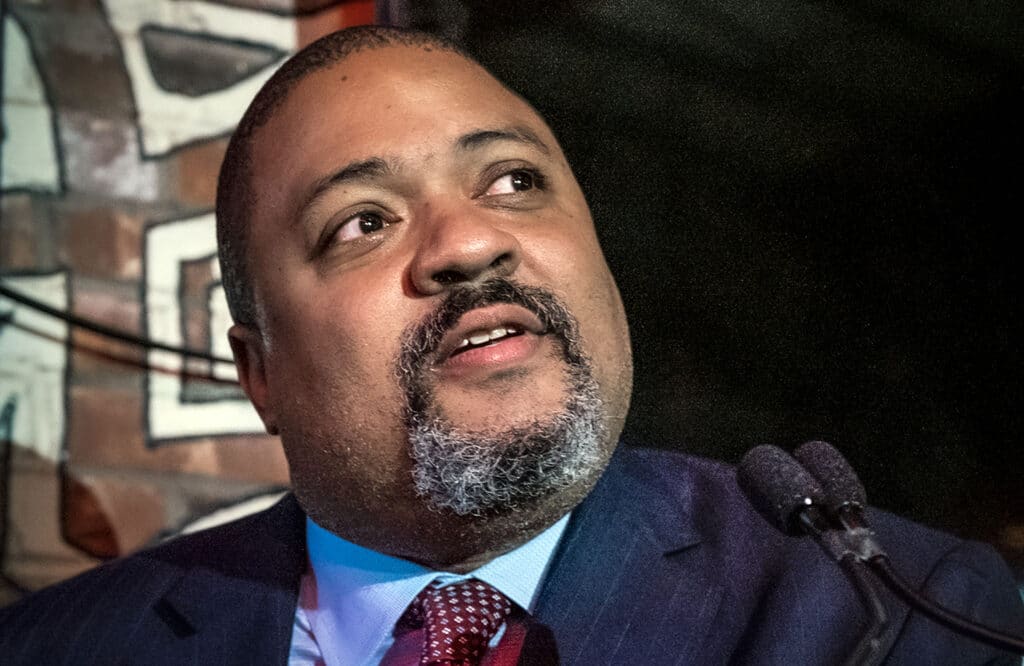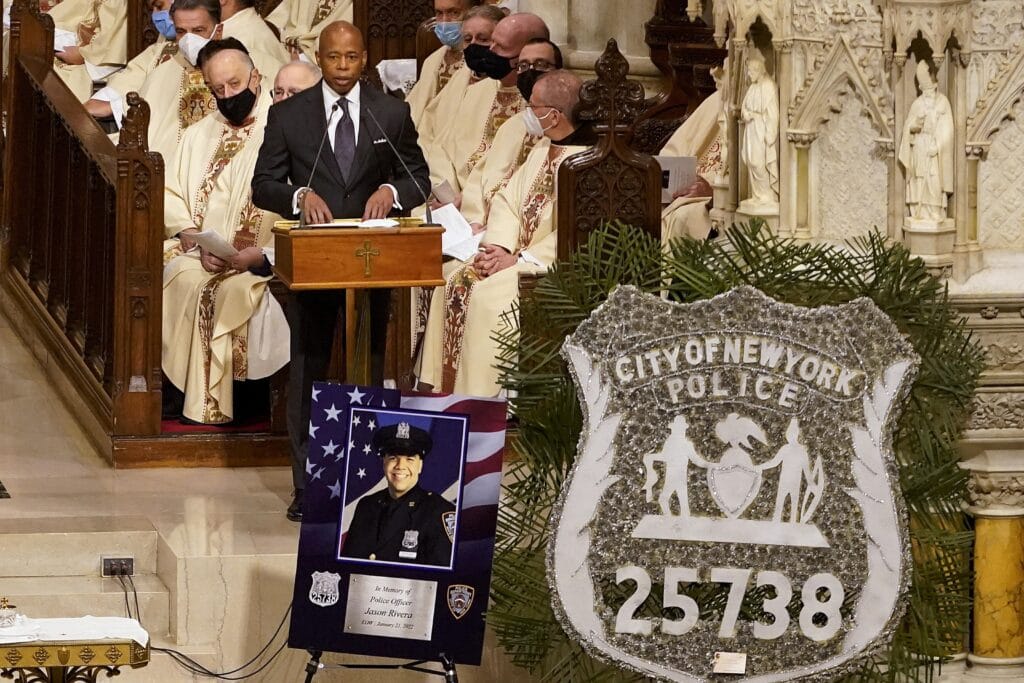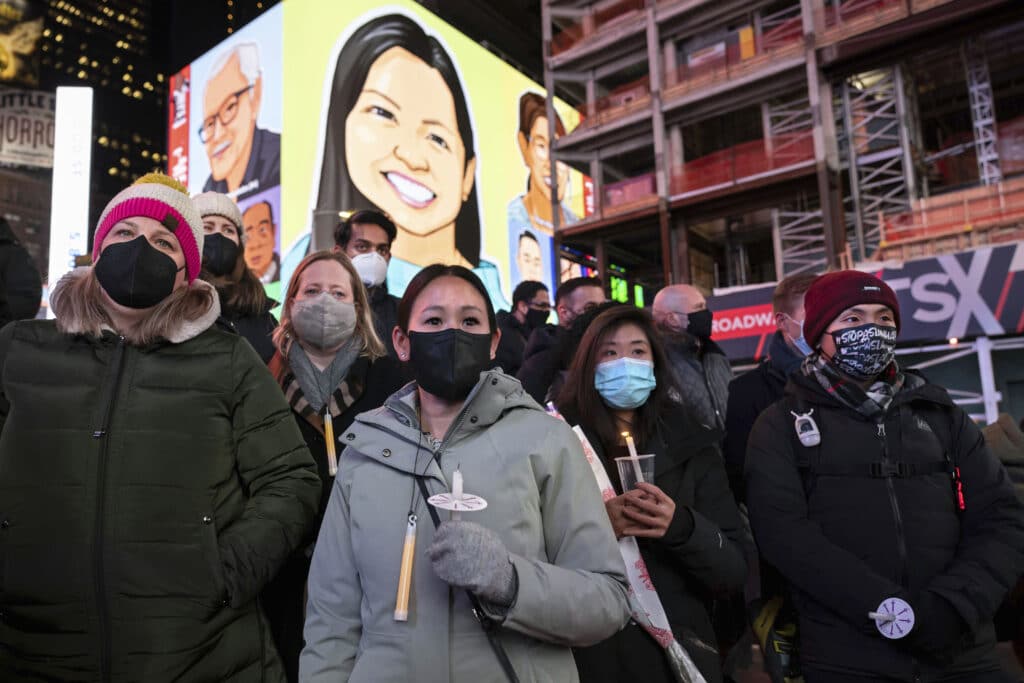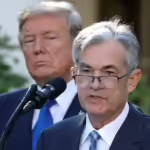There have been some high-profile violent incidents recently in New York City, sparking concerns. But is violent crime any worse than it was a decade ago? The Associated Press has the story:
New York City is not getting more violent, contrary to perception
NEW YORK (AP) — A teenage fast-food cashier shot to death in Manhattan. A woman pushed to her death in front of a subway train in Times Square. An 11-month-old girl wounded by a stray bullet in the Bronx. Two police officers killed in Harlem.
A string of headline-making violence in New York City has frayed nerves and become a rolling trauma for Mayor Eric Adams’ nascent administration.
But while January brought tragedy to the city, statistics suggest it is still about as safe or safer than it was a decade ago, when former Mayor Michael Bloomberg touted it as the “safest big city in America.”

New York City saw 28 killings in January, one fewer than the number it averaged for that month over the prior 10 years.
Last year, as violence spiked nationwide, the total was 488 — up from a record low of 292 in 2017 but a far cry from the early 1990s, when the city averaged over 2,000 killings a year. In 2011, the city had 515.
“In New York, it’s sort of this dual situation,” crime analyst Jeff Asher said. “It’s important to know that this is not the worst it has ever been, while also understanding that it has gotten significantly worse in the last few years.”
The number of people wounded by gunfire surged in New York City during the pandemic and remains stubbornly high.
But its homicide rate (5.5 killings per 100,000 people last year) has remained lower than that in the next six most populous cities, FBI and police crime data show, and lower also than many smaller cities like Jacksonville, Florida; Fort Worth, Texas; and Tulsa, Oklahoma.
Adams, a former police captain who campaigned on a tough-on-crime message, says he is not only battling actual crime, but also a fear and perception of crime spiraling out of control.
Research shows that people tend to be bad at understanding crime trends and generally assume the worst, Asher said.
Adams says he wants to blanket the city with police officers to reassure New Yorkers and visitors alike. He also given outsize attention to his old department in his first month on the job, making it a point to visit roll call, standing with officers after recent violence and taking the lead on directing new crimefighting strategies.

“Being safe is also feeling safe. No one wants to hear stats when they don’t feel safe,” Adams told TV station NY1 last week.
In New York, 2022 began with a string of the type of arbitrary crimes that unsettle people most.
Kristal Bayron-Nieves, the 19-year-old cashier killed Jan. 9 in a late-night robbery at a Burger King in East Harlem, moved with her family to New York in search of a better life after Hurricane Maria devastated Puerto Rico in 2017.
Michelle Go, the 40-year-old woman shoved to the tracks Jan. 15 at the Times Square subway station, worked for the global consulting firm Deloitte and volunteered with the Junior League to help at-risk and homeless families.
The 11-month-old was hospitalized in critical condition after she was hit in the cheek by a stray bullet while sitting in a parked car with her mother on Jan. 19, just days before her first birthday.
The slain officers, Jason Rivera, 22, and Wilbert Mora, 27, had joined the NYPD with hopes of bridging longstanding divides between police and immigrant communities, like the ones they grew up in.
President Joe Biden is scheduled to visit New York on Thursday to discuss ways to curb gun violence — though it is hardly the only place wrestling with the issue.
Los Angeles, the nation’s second largest city, reported 397 killings in 2021, its most since 2007. Chicago had 797 last year, its most since 1996. Philadelphia set a record with 562 killings.
Fort Worth, Texas, a city one-tenth the size of New York, went from 69 killings in 2019 to 118 last year. Oklahoma City had 91 killings last year, its highest total since 2012. Jacksonville, Florida, reversed the trend, going from 140 killings in 2020 to 108 last year, but its homicide rate of 11.4 per 100,000 residents was still double that of New York City.
Still, the recent violence has pushed the Big Apple to a crossroads, with elected officials rushing to prove they’re tough on crime less than two years after leaders were going in the other direction after the Minneapolis police murder of George Floyd prompted a nationwide reckoning on criminal justice.
Elected as a progressive reformer, new Manhattan District Attorney Alvin Bragg has found himself under fire after instructing staff not to prosecute some low-level offenses, like prostitution and some instances of resisting arrest. After a dustup with Police Commissioner Keechant Sewell, Bragg apologized and emphasized his office wasn’t backing away from serious cases, like gun violence and assaults on police.
State bail reforms enacted two years ago to limit pretrial detention have become the bogeyman of police unions and politicians.
Adams took on bail reform in an anti-crime plan, proposing that judges be allowed to consider a defendant’s criminal history and potential dangerousness when setting bail.
U.S. Rep. Tom Suozzi, who is challenging Democratic Gov. Kathy Hochul for governor, has called on her to roll back bail reforms, as have six other Republicans in the state’s congressional delegation. U.S. Rep. Lee Zeldin, a Republican who is also running for governor, even linked the bail law to the burning of an artificial Christmas tree outside Fox News headquarters in Manhattan.
The reforms included eliminating bail for nonviolent felonies, appearance tickets instead of arrests for low-level offenses.
Hochul says she is willing to have conversations about changing the law if data shows the reform is linked to rising crime.
State Assembly Speaker Carl Heastie, a Democrat who spearheaded the bail reform law, said he was frustrated politicians were “blaming bail reform when the sun comes up.”
“I just think it’s unfortunate to link the rise in gun violence solely on bail,” Heastie said. “If that’s the case, why are we having gun problems all over this country?”
By MICHAEL R. SISAK and MICHELLE L. PRICE







